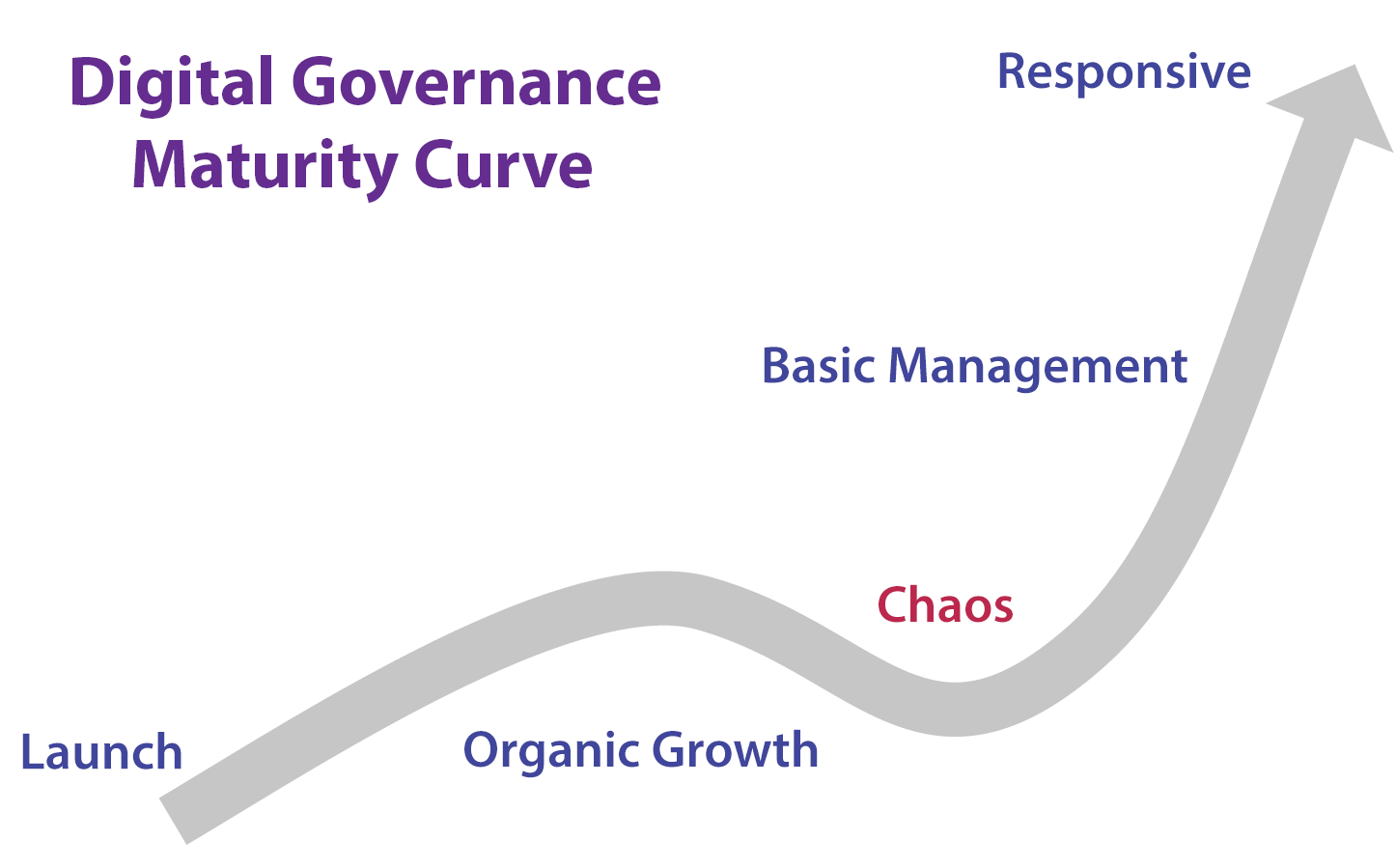Five Digital Governance Design Factors

Digital governance frameworks would be easy to design if they existed in a vacuum. But they don’t. There are many pre-existing organizational factors in every business that influence which aspects of an organization ought to be accountable and responsible for making decisions about what’s happening online. Sometimes the dynamics of these factors are so hard-wired into an organization’s operational processes that they can be difficult to change. Staff and management feel that these dynamics are somehow ordained and immutable—“We’ve always worked like this.” Or, more strongly, “We must work like this.” But, in reality, almost anything in an organization can and does change, given the right forces, including its core products and services and certainly the way it governs itself.
This tug of war between how organizations have worked and made decisions in the past and how they will need to work and make decisions in the information age will come to the forefront as you design your framework. There will be a dance between the existing dynamics of the organization and what digital demands at every stage of your governance framework design process—even more so once you begin the tactical work of defining strategy, policy, and standards.
The Five Factors
There are five factors that regularly influence or are influenced by the digital governance framework design process:
Corporate governance dynamics - Digital governance is a subset of corporate governance and will therefore inherit dynamics from its parent.
External demands - Market-specific and geography-specific regulatory musts and constraints will impact your framework design, as will social norms in regions, nations, and locales.
Internet and World Wide Web governance - Being the cornerstones of digital governance, trends in both of these domains will impact, sometimes substantively, how organizations must govern digital.
Organizational culture will influence how an organization designs its digital governance framework, what the substance of the framework is, and how it is implemented.
The nature of your digital presence will drive the design of your digital governance framework, especially the structure, roles, and responsibilities of your digital team.
The consideration of all of these factors (and others unique to your organization) creates a complex design challenge, which is why a lot of organizations put off designing and implementing a governance framework until the situation absolutely demands it—such as when a website needs a new information architecture or technical platform and the core digital team realizes that they don’t have the authority to effect that change, or when the risk of continuing to operate in an ungoverned manner becomes too great. In those situations, though, it’s unlikely that organizations can take the time to make the right choices. So it’s important to be proactive about designing your framework in advance. Doing it at a time when the organization can take the time to do the job well is important.
From Lisa Welchman, "Five Digital Governance Design Factors" in Managing Chaos: Digital Governance by Design (New York: Rosenfield Media, 2015), 112-126.





